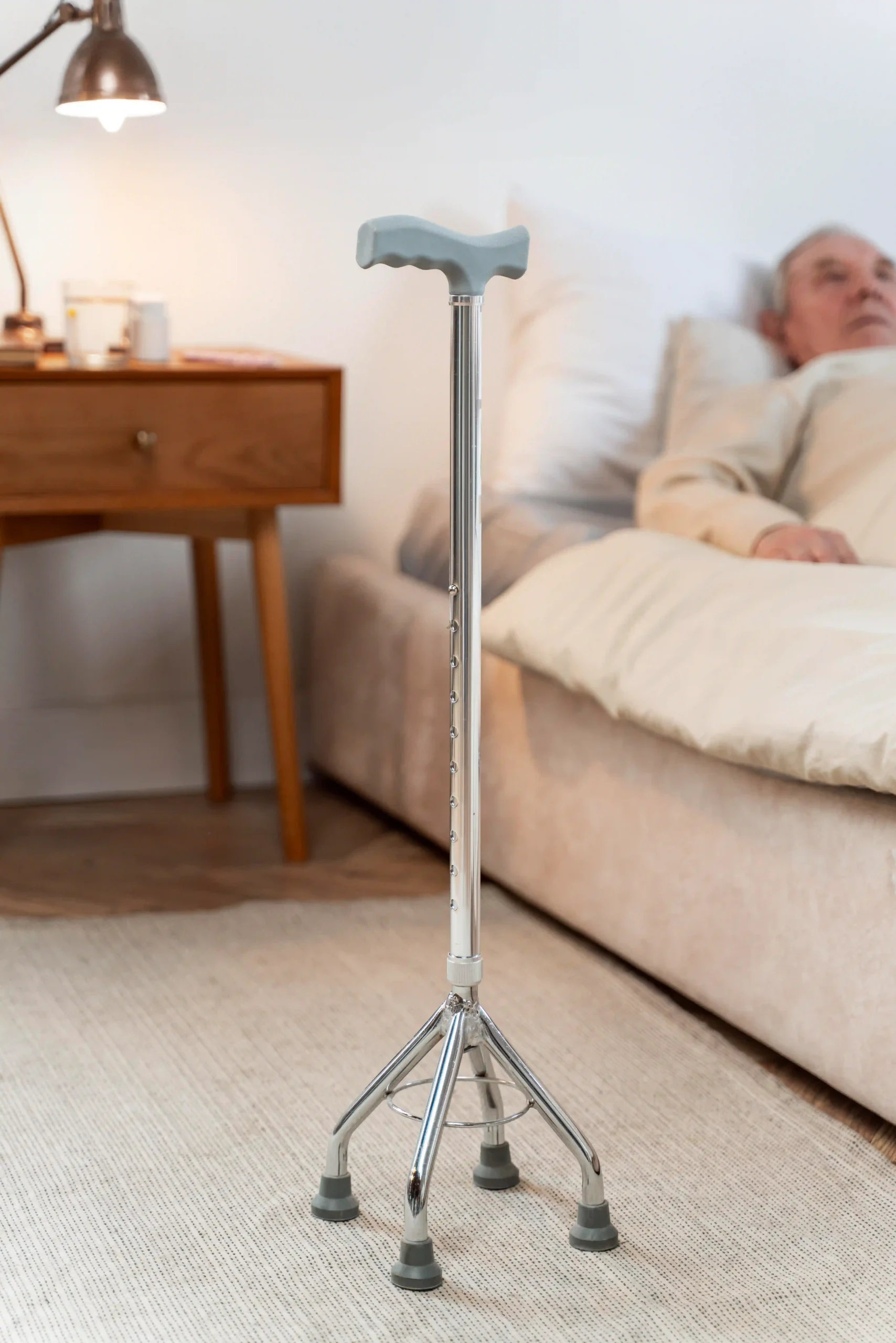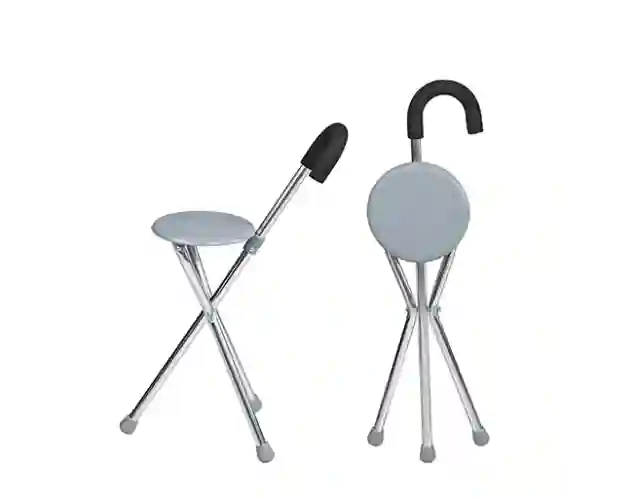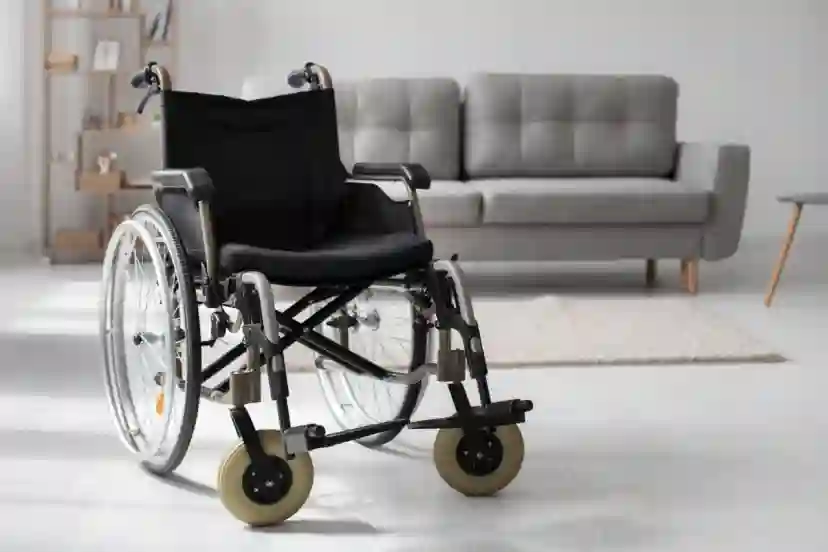Getting Started with Crutches: Common Struggles for First-Time Users
Time : Oct 15, 2025 View : 1,461
The initial experience of using forearm crutches proves to be a challenging one for most people. People who need crutches for injury recovery or permanent mobility support face significant physical and emotional obstacles when they start using these devices. The use of crutches as mobility aids depends on users having sufficient strength and coordination together with self-assurance. The identification of challenging aspects when using forearm crutches enables beginners to develop better mental and physical readiness for their transition.

Preparing to Use Crutches for the First Time
The process of preparing for crutch use requires proper steps to achieve both safety and comfort.
Choosing the Right Type of Crutch
The selection of crutches depends on individual needs because different types of crutches exist for various purposes. Users who require extended support or possess strong upper body muscles should choose forearm crutches which are also known as elbow crutches. The design of forearm crutches enables users to move more freely while minimizing contact with their armpits. Your selection of crutches should be based on your medical condition and your physical strength and the amount of time you need to use them.
The forearm crutch features a comfortable handgrip made from durable materials and an anodized aluminum leg with a high-quality rubber tip.
Adjusting Crutches to Fit Properly
Using crutches with incorrect height settings will result in discomfort and potentially dangerous injuries. The correct height adjustment for crutches requires the following steps:
Maintain a straight posture with your shoulders in a relaxed position while your arms rest by your sides. The handgrip height should match the point where your wrist meets your forearm when your arm reaches its full extension.
The grip position requires your elbows to bend at a 30-degree angle while holding the handles.
Wearing Appropriate Footwear
The proper selection of footwear serves as an essential factor for maintaining balance when using crutches. Select footwear that has a closed-toe design with flat soles and non-slip features to decrease the chance of falling.
Physical Challenges Faced by New Users
The process of learning to use forearm crutches effectively even with correct installation requires extensive practice to handle their physical challenges.
Balancing While Standing and Walking
The main obstacle for new users involves keeping their balance when they stand still or move around. Users need to develop trust in their body’s weight distribution abilities through practice to maintain stability while using their arms.
Managing Fatigue in Arms and Shoulders
The weight of the body primarily rests on the upper limbs when using forearm crutches. As a result:
The pressure force spreads across the handgrip area.
The initial period of use causes muscle adaptation which results in soreness that affects the shoulders and arms and wrists.
Navigating Uneven Surfaces and Stairs
People who are new to crutch use should exercise special care when walking on sidewalks with cracks and gravel paths and staircases because these surfaces present major safety hazards. People need to exercise additional care when using these areas until they develop sufficient skills.
Coordination and Movement Difficulties
The process of learning efficient movement with forearm crutches requires students to learn various gait patterns which match their individual mobility level.
Learning the Correct Gait Pattern
The following gait techniques exist for different injury types and user capabilities:
Three-Point Gait
The method requires users to advance their crutches and injured leg together before they can step through with their healthy leg. People use this method when they need to keep their injured leg off the ground.
Four-Point Gait
The device operates at a stable pace yet it moves at a slower rate than other devices because each leg and crutch operates independently in a specific sequence starting with the right crutch followed by the left foot then the left crutch and finally the right foot.
Swing-Through Gait
Experienced users who possess strong upper body muscles perform this technique by swinging their legs forward beyond their planted crutches which they placed in front of them.
Synchronizing Arm and Leg Movements
Learning to coordinate arms and legs proves essential but it remains challenging during the initial stages. The ability to perform movements in sync requires practice because improper timing leads to loss of balance and potential tripping.

Pain and Discomfort Issues
New users of forearm crutches experience physical discomfort as a typical problem.
Hand, Wrist, and Underarm Soreness
The use of elbow-style supports results in less underarm soreness than axillary models do.
The ergonomic design and correct elbow position work together to spread out the pressure force across the handgrip.
The design provides a benefit but using it for an extended period will still lead to wrist or hand strain unless proper posture and grip are maintained.
Preventing Skin Irritation from Prolonged Use
The area around cuffs exposed to skin for long periods will develop friction burns and skin irritation. The use of padded sleeves together with moisture-wicking clothing helps reduce discomfort when using the device for extended periods.
Emotional and Psychological Hurdles
The first-time user experience includes more than physical challenges because it demands an emotional confrontation with new situations.
Coping with Frustration and Dependency
The loss of mobility at any time creates feelings of frustration and helplessness in people. The need to depend on others for tasks that were previously self-performed can lower self-esteem at first but practice will help build confidence.
Adjusting to Temporary or Long-Term Mobility Limitations
The process of accepting reduced mobility requires mental strength because it happens either temporarily because of injuries or permanently because of chronic health issues. The emotional transition period becomes easier to handle through participation in support groups and counseling sessions.
Safety Concerns When Using Crutches
The use of forearm crutches requires safety to be the top priority at every step of the process.
Avoiding Slips on Wet or Smooth Surfaces
The grip of crutch tips needs to be sufficient because worn-out rubber tips require immediate replacement since they become less effective at gripping surfaces especially when walking on wet tiles or polished floors.
Identifying Safe Paths Indoors and Outdoors
Plan your routes in advance to prevent steep inclines unless you have help available. Use elevators instead of stairs for all trips until you feel able to move through vertical spaces safely by yourself.
Tips to Improve Confidence and Comfort
The process of getting past initial challenges becomes simpler through established practice plans and expert support when necessary.
Practicing in a Controlled Environment
Begin your training in controlled indoor environments that have stable surfaces before you move to outdoor spaces. Start with slow corner turns while you build up your endurance because rushing into challenging movements will increase your risk of accidents and setbacks.
Seeking Guidance from Healthcare Professionals
Physiotherapists create individualized training programs which target ambulation muscles for strengthening while addressing posture problems before they develop into persistent discomfort.
Introducing Xunyu Medical as a Trusted Mobility Aid Supplier
The selection of quality mobility aids including forearm crutches requires users to find suppliers who prioritize both safety and comfort standards such as Xunyu Medical.
Overview of Xunyu Medical’s Product Offerings
Foshan Xunyu Medical Technology Co., Ltd. operates from Danzao Town in Nanhai District of Foshan City within Guangdong Province to produce assistive devices for elderly care such as crutches and walkers and shower chairs and bedside commodes and wheelchairs and toilet risers.
Commitment to Quality and User Safety
Xunyu Medical established its operations to focus on technological advancement which led to product design improvements for elderly care requirements. The company’s focus on functional design and user-friendly features has built trust with customers across the globe.
Xunyu Medical expands its worldwide presence through major platforms which deliver high-quality senior care products to Europe and America and Asia-Pacific regions.

Summary of Key Points for First-Time Crutch Users
Learning to use forearm crutches requires proper fitment methods and physical fatigue management and gait pattern mastery and emotional adjustment and safety measures and selecting trustworthy suppliers like Xunyu Medical who grasp these difficulties because of their extensive industry experience.
FAQs:
Q1: How long does it take to adapt to using forearm crutches for walking?
A: Adapting to forearm crutches typically takes 1–2 weeks, depending on fitness levels and practice frequency. A physical therapist’s guidance accelerates learning by ensuring proper posture from the start.
Q2: Are forearm crutches safe for outdoor mobility?
A: Yes, forearm crutches are safe for outdoor use with proper technique and dry surface selection. Xunyu Medical’s rubber-tipped crutches offer excellent traction, designed for safety and stability.
Q3: What should I do if my hands hurt after using new forearm crutches?
A: Hand discomfort often fades as muscles adapt. Using padded grips and adjusting handle height or angle with your provider’s guidance can reduce strain and improve comfort during adaptation.


